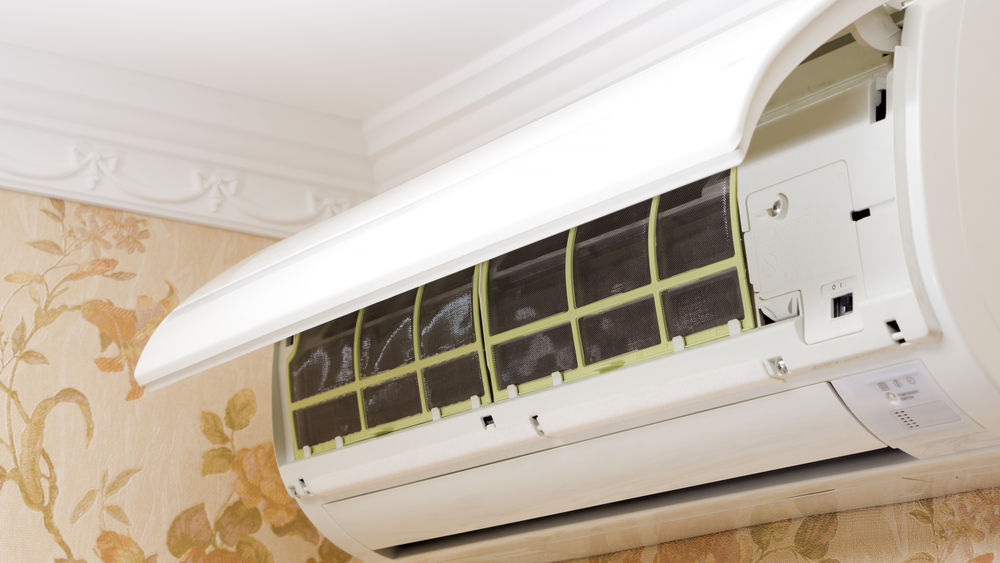Do you ever wonder how you can keep your home cool in the summer and warm in the winter without breaking the bank? The answer is simple: reverse cycle air conditioning. This energy-efficient and cost-effective solution has become increasingly popular for homeowners and businesses looking to maintain a comfortable environment year-round. In this article, we’ll explore everything you need to know about reverse cycle air conditioning, including how it works, its benefits, different types of systems, and more. So say goodbye to unbearable temperatures and hello to ultimate temperature control with reverse cycle air conditioning.
What is Reverse Cycle Air Conditioning
Reverse cycle air conditioning, also known as heating and cooling air conditioning, is an innovative temperature control solution that provides both cooling and heating capabilities in a single unit. By reversing the refrigeration process, this type of air conditioner can transfer warm air in or out of your home, depending on your desired temperature. This makes it an effective and energy-saving option for maintaining a comfortable living environment year-round.
How Does Reverse Cycle Air Conditioning Work?
Reverse cycle air conditioning systems use a refrigerant to absorb heat from the outside air and transfer it into your home when heating is needed, or absorb heat from inside your home and transfer it outside when cooling is needed. The system essentially reverses its operation depending on whether you require heating or cooling. This process ensures a consistent and comfortable temperature inside your home, regardless of the outdoor climate.
The core components of a reverse cycle air conditioning system include a compressor, condenser, expansion valve, and evaporator. The hot, high-pressure refrigerant then passes through the condenser, where it releases heat to the outdoor air (during cooling mode) or the indoor air (during heating mode). The now cooler, still high-pressure refrigerant flows through the expansion valve, which reduces its pressure and temperature. Finally, the cold refrigerant enters the evaporator, where it absorbs heat from the indoor air (during cooling mode) or the outdoor air (during heating mode), and the process repeats.
Benefits of Reverse Cycle Air Conditioning
Energy Efficiency
One of the primary advantages of reverse cycle air conditioning is its energy efficiency. These systems are designed to extract and transfer heat effectively, requiring less energy to operate compared to traditional heating and cooling methods, such as gas or electric heaters. This translates to lower energy bills and a reduced environmental impact.
Cost-Effectiveness
In addition to being energy-efficient, reverse cycle air conditioning systems are also cost-effective in the long run. Though the initial investment may be higher compared to conventional heating and cooling options, the long-term savings on energy bills make it a worthwhile investment.
Dual Functionality
The dual functionality of reverse cycle air conditioning systems – providing both heating and cooling – offers the convenience of having temperature control in one unit. This eliminates the need for separate heating and cooling devices, saving space and reducing the overall clutter in your home.
Improved Air Quality
This systems typically come equipped with built-in air filters, which help to purify the air by trapping dust, allergens, and other pollutants. This contributes to better indoor air quality, ensuring a healthier and more comfortable living environment.
Types of Reverse Cycle Air Conditioning Systems
Split System
A split system reverse cycle air conditioner consists of two main components – an indoor and an outdoor unit. The indoor unit is responsible for distributing conditioned air inside your home, while the outdoor unit contains the compressor and condenser components. This type of system is ideal for cooling or heating one or two rooms, making it a popular choice for residential properties.
Ducted System
A ducted reverse cycle air conditioning system is designed to heat and cool an entire home or large commercial spaces. It consists of a central outdoor unit connected to a series of ducts and vents throughout the property. This allows for even temperature distribution and greater control over individual room temperatures.
Multi-Split System
A multi-split reverse cycle air conditioning system is a variation of the split system, connecting multiple indoor units to a single outdoor unit. This option allows for individual temperature control in different rooms and is ideal for properties with limited space for multiple outdoor units.
Inverter Technology: The Future of Reverse Cycle Air Conditioning
Modern reverse cycle air conditioning systems often feature inverter technology, enhancing their energy efficiency and performance. Inverter technology allows the air conditioner to continuously adjust its compressor speed to maintain a consistent temperature, resulting in reduced energy consumption and lower operating costs. It also helps to reduce wear and tear on the compressor, lengthening the system’s lifespan.
Conclusion
Reverse cycle air conditioning presents numerous benefits for homeowners and businesses alike, including energy efficiency, cost-effectiveness, dual functionality, and improved indoor air quality. With various system types available, such as split systems, ducted systems, and multi-split systems, you can find the perfect solution to meet your specific needs.
Moreover, advancements like inverter technology continue to improve the performance and efficiency of these systems, making them an increasingly attractive option for maintaining a comfortable living environment year-round. By investing in a reverse cycle air conditioning system, you’re not only making a smart choice for your budget but also contributing to a more sustainable future. So, it’s time to experience ultimate temperature control and comfort with reverse cycle air conditioning.

